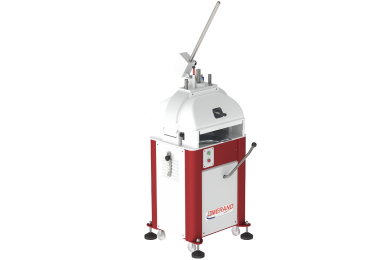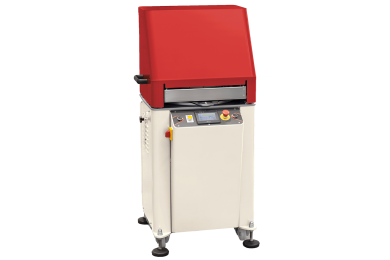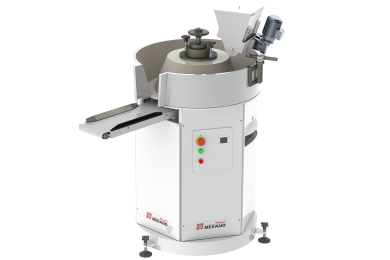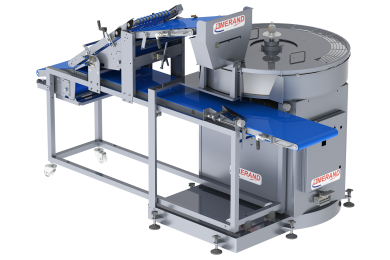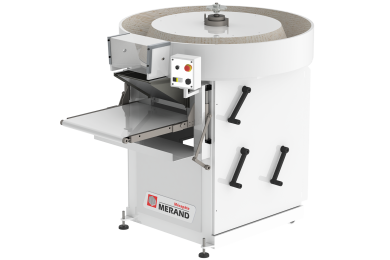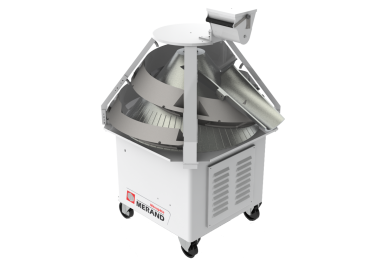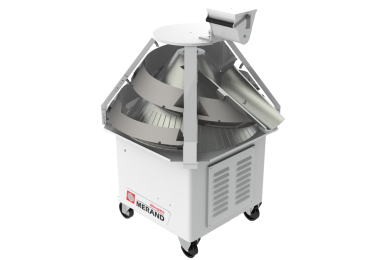The rounding process allows the restructuring of the dough's glutinous network and the increase the strength of the dough pieces. Depending on the characteristics of the dough, the dough pieces are tightened more or less strongly.
Pre-rolling is mainly done with 3 types of machines:
- Pre-rounding tiles on automatic dividers. Their main asset is that they are very big and they are included in the divider.
- Strip rounders have 2 belts that turn in opposite directions. The disadvantage of these rounders is that they take a lot of space and they tend to round the dough balls into "pear shape" balls rather than nicely rounded dough balls which makes it more difficult to elongate in the moulder.
- Conical rounders (there are some conical rounders with fixed channels and others with changeable channels)
Rounding after proofing is mainly done with 2 types of machines:
- Conical rounders can be used before proofing as well as after automatic proofing. They are well suited for hard or sticky doughs like rye based doughs but not very recommended for a final rounding.
- Eccentric rounders are usually more popular for the final rounding of dough balls because they respect more the dough, especially for soft and fragile doughs for which the baker will want to keep the airy structure.
